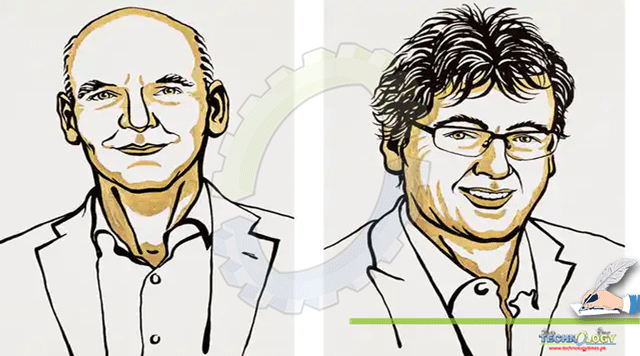This year’s Nobel Prize in Chemistry is awarded to Benjamin List of Germany, and David MacMillan of USA, for developing a new tool of building durable, elastic and environment-friendly molecules.

Virtually all chemical reactions – from photosynthesis, combustion and rusting of iron to formation of body’s calcium carbonate – require catalyst(s), a process called catalysis. The two scientists share the Nobel Prize 2021 for discovering a new type of catalysis.
To understand the prize-winning research, let us skim through some concepts.
Catalyst and Catalysis
Catalyst is a molecule that controls and enhances specific chemical reaction(s) without becoming a product of that reaction. A catalyst generally reacts with one or more reactants, leading to the formation of one or more intermediates, which are then converted into the product while regenerating the catalyst. Catalysis refers to the catalyst-induced reactions, which account for about 35% of entire world’s gross domestic product.
Before the Nobel Discovery
Scientists thought that a catalyst could only be an enzyme or a metal. Enzyme is a catalyst in a living organism, made typically of strings of amino acids called proteins. Enzymes give life its shape, color and functions. Metals capable of providing and/or accommodating electrons in a chemical reaction can act as catalyst because they loosen certain bonds and facilitate formation of new ones. If such a metal is a heavy metal (having high density) like mercury, arsenic or lead, this is detrimental to the environment. So, alternates to metals have been highly warranted.
Discovery – Asymmetric Organocatalysis
Drs. List and MacMillan introduced in year 2000, independent of each other, a third type of catalysis (besides metal and enzyme), called asymmetric organocatalysis. Let us breakdown this latter term.
Asymmetric molecules: Several molecules exist in two versions that are mirror images of each other. Our body can often detect the difference: one variety of the molecule Limonene smells like lemon, while its mirror image has an orange scent. Chemists in pharmaceutical, cosmetic and other industries often need one version of a molecule, and not the other. The Nobel discovery provides an efficient method of finding and using the required mirror image.
Organocatalysis: Any stable framework formed by carbon atoms is typically called organic. The term ‘organocatalysis’ was first coined by Dr. MacMillan when he found that he could generalize the use of small organic molecules to catalyze chemical reactions. Organocatalysis is used in many processes of chemical production to reduce various intermediate products to get rather directly to the formation of products. This helps minimize chemical waste. Consider the poison strychnine. Its production required 29 different chemical reactions at the time of its first synthesis in 1952. Based on the principles of organocatalysis, strychnine was synthesized in 2011 in just 12 steps with a 7000 times greater efficiency than before. This is just one example of the magic of the Nobel discovery.
Dr. List’s Work
Enzymes are molecules typically comprising hundreds of amino acids with/with metal(s). Dr List hypothesized that only a tiny portion of big enzyme molecule is needed to catalyze a reaction. He raised the question: can a small number of amino acids (or a single amino acid) of an enzyme do the job of a full-sized enzyme? In his experiments, instead of an entire enzyme, just one amino acid Proline was sufficient to catalyze a chemical reaction of bonding carbons from two different molecules. The reason turned out to be the presence of nitrogen atom in Proline that can accommodate and provide electrons to facilitate the chemical reaction. Moreover, Proline formed one mirror image more often than the other, meaning that Proline was driving the process of asymmetric catalysis. In other words, an organic substance Proline had substituted both enzyme(s) and metal(s) in asymmetric catalysis, hence called ‘asymmetric organocatalysis’.
Dr. MacMillan’s Work
Dr. MacMillan had been working on asymmetric catalysis using metals, but he soon realized that such processes are difficult to run on an industrial scale. Metals can be difficult to obtain and expensive to use. Employing metals in catalysis often requires an environment free from oxygen or moisture. Dr. MacMillan decided to test the ability of selected organic molecules to build rings of carbons. As expected, not only was he able to produce such rings, but the rings were produced in an asymmetric manner: products contained one mirror image 90% more than the other. Hence, he had performed ‘asymmetric organocatalysis’.
Significance
You can now construct anything from pharmaceuticals and perfumes to food flavors and plastics. Discovering the precision and efficiency of asymmetric organocatalysis has already revolutionized our world and will continue to do so in the foreseeable future.
Reference
Press release: The Nobel Prize in Chemistry 2021. NobelPrize.org. Nobel Prize Outreach AB 2021. https://www.nobelprize.org/prizes/chemistry/2021/press-release/